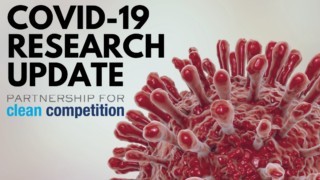PCC-funded scientist Chris Chouinard detailed an analytical technique for the American Chemical Society (ACS), showcasing some of the latest in clean sport research. The approach uses ion mobility-mass spectrometry to help regulatory agencies detect existing dopants and future “designer” compounds. The research was presented as part of ACS Spring 2021, a meeting that features nearly 9,000 presentations on a wide range of science topics.
As the ACS explains in a news release on the presentation:
[I]t can be tough to differentiate molecules with minor structural differences — including isomers — that distinguish endogenous steroids from exogenous ones, such as the synthetic anabolic steroids athletes take to build muscle.
To accentuate those differences, Chouinard pairs MS with ion mobility (IM) spectrometry, a separation technique he learned as a graduate student with Richard Yost, Ph.D., at the University of Florida.
…
Now, the researchers report they have tested this technique in urine against nearly half the prohibited steroids on WADA’s list and have shown it can successfully characterize and identify these compounds. They also showed the method can characterize and identify banned glucocorticoids, such as cortisone, that improve athletic performance by suppressing inflammation from injuries.
You can read more about the Chouinard lab’s work in anti-doping here.
You can also watch a video presentation on the findings:



